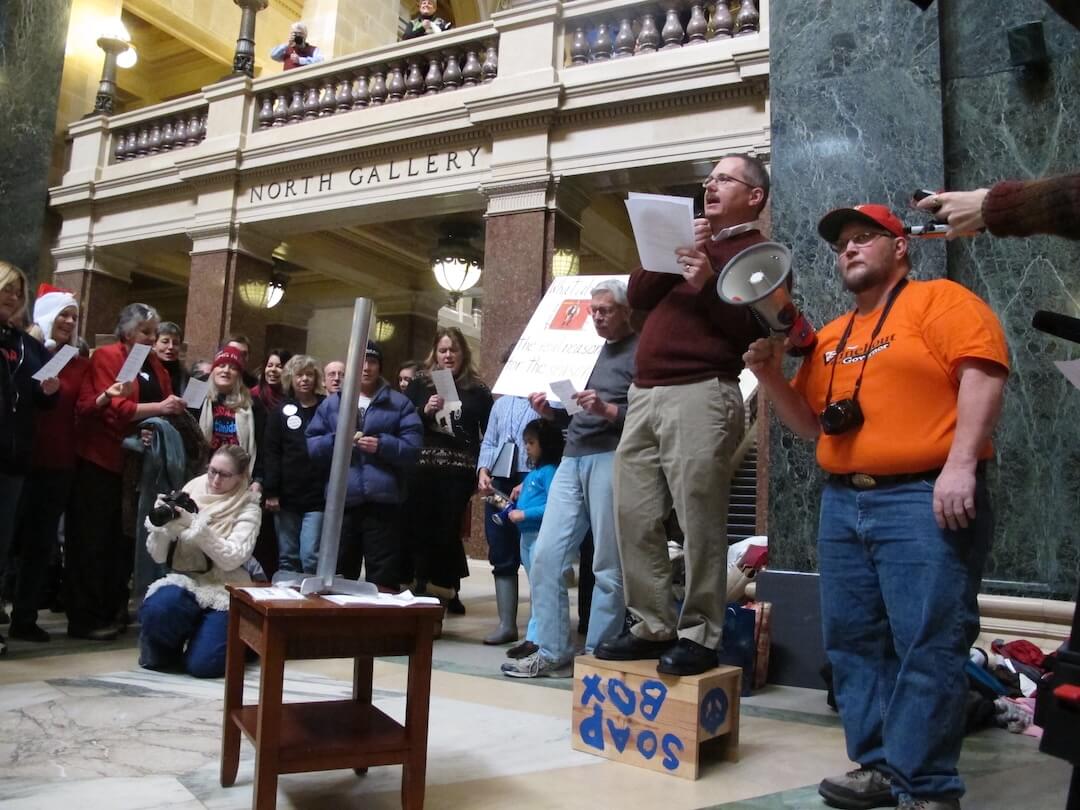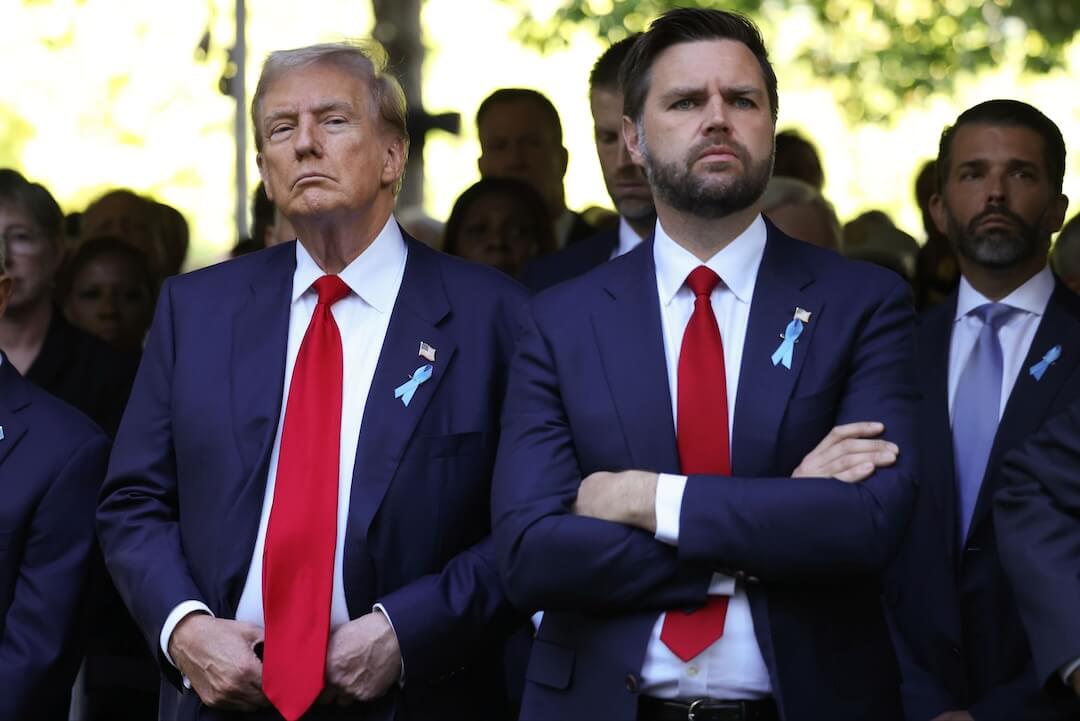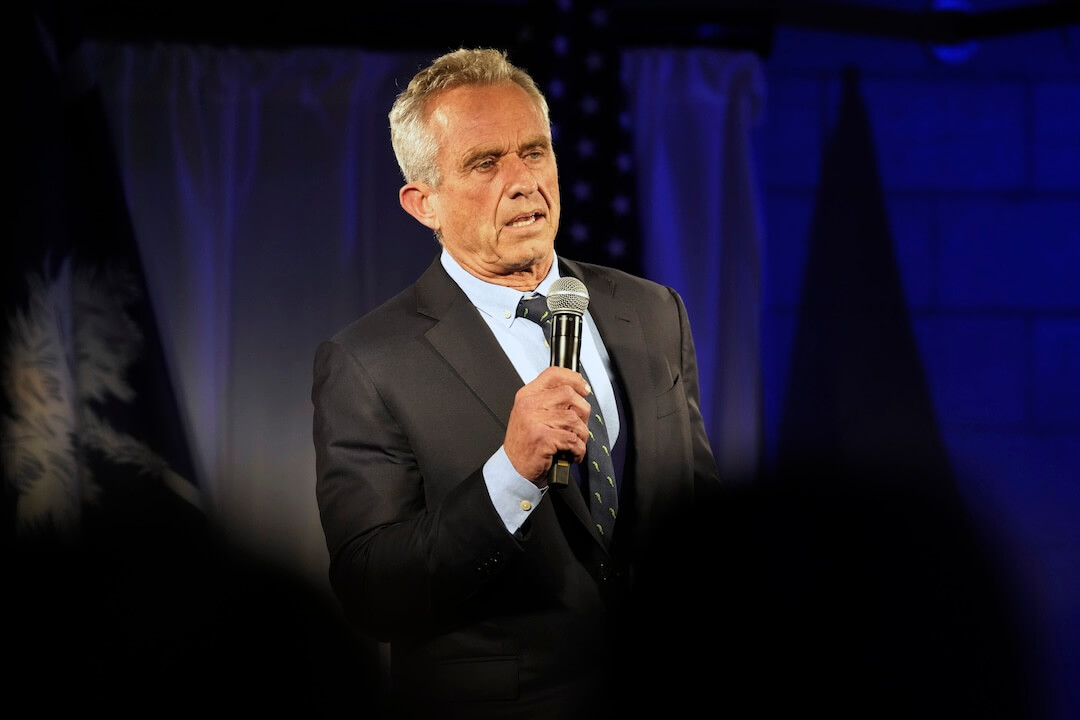 Covering COVID-19 is a daily Poynter briefing of story ideas about the coronavirus and other timely topics for journalists, written by senior faculty Al Tompkins. Sign up here to have it delivered to your inbox every weekday morning.
Covering COVID-19 is a daily Poynter briefing of story ideas about the coronavirus and other timely topics for journalists, written by senior faculty Al Tompkins. Sign up here to have it delivered to your inbox every weekday morning.
California Rep. Karen Bass hoped that one year after police killed George Floyd, Congress would have passed the George Floyd Justice in Policing Act. President Joe Biden said it was a priority, and Bass said she thinks it will pass, but the Senate does not yet have it scheduled for debate. It may happen “within weeks,” Bass says.
The Justice in Policing Act includes significant reforms. The Hill reports that the major sections of the bill are still intact, while others may not make the final draft. Still included:
- Racial profiling at every level of law enforcement would be prohibited.
- Chokeholds, carotid holds and no-knock warrants would be banned at the federal level.
- Qualified immunity for officers would be overhauled.
- A national police misconduct registry would be created so that officers who are fired for such violations could not be hired unknowingly by another police department.
The main sticking points in the negotiations have been qualified immunity and a federal provision known as the “color of law” statute, the Hill reports:
The “color of law” statute prohibits law enforcement personnel from willfully depriving “a person of a right or privilege protected by the Constitution or laws of the United States.”
Proponents of changing the statute note that proving a police officer willfully violated another person’s civil rights is exceedingly difficult to prove in court, leading to few police misconduct cases at the trial stage.
Qualified immunity shields government officials — including police officers — from individual liability, except when constitutional rights are explicitly violated.
Qualified immunity was established by the Supreme Court in 1967.
Just last week, a federal appeals court granted qualified immunity to Louisiana officers who were accused of forcing an unarmed Black man to the ground and beating him. That decision comes from a 2016 case involving a man named Gregory Tucker who police spotted driving with broken brake lights. Police stopped him, patted him down and eventually forced him to the ground, where he was injured and still not arrested. The officers beat and handcuffed him.
A lower court said it was clearly a case of battery. But an appellate court ruled one of the officers, who arrived minutes after the initial stop and participated in the beating, didn’t know Tucker was unarmed and so it was reasonable to use force.
The American Bar Association says qualified immunity undermines the public’s trust:
Unfortunately, most members of law enforcement operate today in a culture of near-zero accountability. Police officers rarely face meaningful consequences for their misconduct, and the public’s accurate perception of this fact has contributed to what can best be described as a crisis of confidence in our nation’s law enforcement.
The National Police Association argues that the public misunderstands the concept of qualified immunity. The NPA says the protection does not mean bad officers escape responsibility for their actions. They can still be charged criminally in state and federal courts and they can still face civil lawsuits in state and federal courts. The NPA says:
At what point does qualified immunity apply? When an officer engages in a duty that must be performed, they have training, policy and procedure to follow. But no two situations are alike as policy manuals will state and courts will acknowledge. When an officer uses their judgment and the outcome is a bad one, a claim of qualified immunity may be made. If the decision that the officer has made was one that was had no clear precedent, then it is only fair to allow for human judgement errors in volatile, fast moving events. That’s all qualified immunity amounts to. There is no lack of accountability for decisions a police officer must make. Qualified immunity should remain as a just and reasonable protection.
While Congress remains undecided about what to do with qualified immunity, the American Bar Association says states are acting:
Many individual states have started to take up the issue themselves. While states cannot modify qualified immunity at the federal level, they do have the authority to pass their own state-level civil rights laws — without qualified immunity. That is exactly the approach that Colorado took in June 2020. As part of its comprehensive “Law Enforcement Integrity and Accountability Act” (which passed by overwhelmingly bipartisan margins), Colorado created a civil action against law enforcement officers who violate people’s constitutional rights, and expressly provided that “qualified immunity is not a defense to liability.”
24 states and DC have passed police reform legislation
The National Conference of State Legislatures says almost half of the states enacted new police reform laws since George Floyd’s death. You can go here and look up police reform bills in each state.
For example, when I use the tool to search Florida for new bills related to investigations and discipline, I find five bills that were filed in the state legislature. All of them died. But the search will help you find the bills’ sponsors, who could talk about why it is so difficult to pass reform bills or how their legislation that did pass will affect the public or police.
The National Conference of State Legislatures says:
Nine states mandated the use of police body cameras in some capacity. Colorado, Connecticut, Illinois, Maryland, New Jersey and New Mexico each enacted broad statewide mandates. New York and Vermont laws required body camera use by state law enforcement agencies, and Kentucky and Maryland passed laws requiring activation when executing warrants.
Seventeen states and the District of Columbia have addressed neck restraints by creating criminal penalties for their use, prohibiting or restricting their use to when deadly force would otherwise be authorized.
Legislatures pursued more independent and transparent investigations, including after use-of-force incidents. Colorado and Virginia empowered their attorneys general to investigate and pursue civil pattern and practice suits. California, Colorado, Connecticut, Iowa, Minnesota, New York, Virginia and Washington recently authorized state officials, usually attorneys general, to investigate, audit or prosecute certain incidents.
Colorado, Nevada, New York and Virginia have new legal duties requiring officers to provide medical assistance or aid to individuals. States also created statutory duties to intervene in excessive force or report excessive force.
Colorado, Connecticut, Massachusetts and New Mexico made it easier for victims of civil rights violations to recover damages in state court. The new laws created or expanded state causes of action and limited immunity defenses. Colorado and New Mexico specifically limited qualified immunity.
Illinois, Kentucky, Maryland, Massachusetts and Virginia each enacted legislation regulating or restricting the use of no-knock warrants.
Axios assembled a list of how local and state governments moved faster than the federal government in passing police reform measures. Here are some examples:
- California passed bills on Sept. 30 that ban the use of chokeholds and allow the state Department of Justice to investigate police shootings.
- San Francisco Mayor London Breed directed the city’s police department to ban the use of tear gas, tanks and bayonets on unarmed civilians.
- Philadelphia Mayor Jim Kennedy said on June 25 that the city’s police commissioner had placed a moratorium on tear gas and “other non-lethal methods,” in response to videos of corralled protesters being tear gassed.
- New York Gov. Andrew Cuomo signed legislation on June 12 banning chokeholds and repealing a decades-old law that sealed records of alleged officer misconduct from the public.
- The Phoenix Police Department said on June 9 it wouldn’t allow officers to use the “sleeper” hold, a few days after California Gov. Gavin Newsom directed state police to do the same.
- In Texas, the Austin City Council unanimously voted to limit police use of force and reduce the department’s 2021 budget, the Texas Tribune reports.
- Denver’s police announced on June 7 that officers and SWAT units would turn on body cameras during “tactical operations,” and officers need to report “if they intentionally point any firearm at a person.”
Nearly 50 bills and resolutions directly bear George Floyd’s name.
22 states are dropping federal unemployment benefits. Are there jobs?

A sign seeking to hire laborers is posted outside a concrete products company in Evans City, Pa., Wednesday, May 5, 2021. A bill by Pennsylvania’s Republican-controlled Legislature to reinstate work-search requirements for people claiming unemployment benefits cleared the House Labor and Industry Committee on a party-line vote Tuesday. (AP Photo/Keith Srakocic)
Close to half of all states are walking away from the federal unemployment benefits that critics say contribute to people not taking jobs that employers are begging to fill. It means that 3.6 million out-of-work Americans will not see about $21.7 billion paid out in $300 a week benefits.
Nearly all of the 22 states dropping the federal benefits are governed by Republicans. Four states are offering “return to work” bonuses instead of the federal jobless benefits.
This map shows the states dropping federal benefits outlined in black (Alaska also is dropping out but is not on this map):
You can go here to see how much each state gets in federal extended unemployment benefits, including how many people are covered state-by-state.
Texas’ decision to withdraw from federal benefits in late June touches hundreds of thousands of workers, but Gov. Greg Abbott says there are a million jobs open in his state. The Texas Tribune reports:
Abbott said there are nearly 60% more listed jobs open in Texas today compared to February 2020. According to the Texas Workforce Commission, approximately 76% of posted jobs pay more than $11.50 an hour, and 2% of posted jobs pay around the minimum wage.
But multiple Texans on federal unemployment said that those numbers don’t tell the full story.
Jobless Texans told The Texas Tribune they’re desperate to return to work, but they haven’t had any luck when applying to multiple jobs every month. For some, one month isn’t enough time to apply for and find a job, and others say that the income from the available jobs at places like retail stores and restaurants just isn’t enough to pay for their rent, food and other expenses.
States are pulling the plug on the extended benefits even as we just saw a steep drop in new unemployment claims.
In July last year, four months after the pandemic tore through the economy, roughly twice as many people as now — 32 million — were receiving some form of unemployment benefit, though that figure was likely inflated by fraud. As recently as late February this year, about 20 million people were receiving aid.
Even so, 19 states say they will also cut off all benefits for the self-employed and gig workers, who became newly eligible for jobless aid under a relief package that was enacted in March last year. They will also drop out of a federal program for people who have been out of work for more than six months.
In addition, 35 states have reinstated a requirement that jobless aid recipients search for work in order to keep receiving benefits. That requirement had been suspended at the start of the pandemic, when many businesses were closed and Americans were encouraged to stay at home.
Research suggests that roughly half the unemployed are receiving more income from jobless benefits, when you include the weekly $300 federal supplement, than their former jobs paid them. An analysis by Bank of America found that people who earned under $32,000 at their old jobs are likely now receiving more in unemployment aid than they did from working.
But the Century Foundation uses the newest jobless filing figures to argue that the extended benefits do not keep people on the sidelines.
The ostensible rationale for these punitive actions is a concern about workers’ hesitance to accept jobs. But today’s data indicates that unemployment aid is not keeping workers on the sidelines.
The number of workers filing ongoing claims for state benefits has plummeted to 3.68 million NSA, down 36 percent from when the $300 was reinstated at the beginning of the year. PEUC and PUA benefits fell to their lowest levels in three months, dropping by more than two million since March 6. PUA ticked down by 678,000 to 6.6 million and PEUC dropped by 150,000 to 5.1 million — as even those workers with the greatest barriers are finding work. In other words, emergency unemployment aid is doing what it is meant to do: serving as a temporary lifeline while workers search for and return to work.
If you want to take a deep dive into state-by-state data, this is one place you can go.
We’ll be back tomorrow with a new edition of Covering COVID-19. Are you subscribed? Sign up here to get it delivered right to your inbox.












